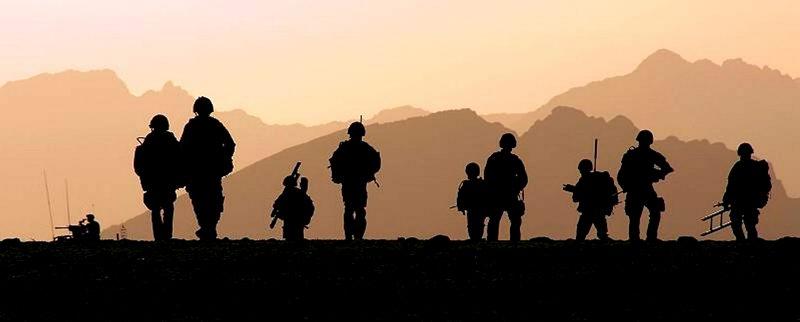ASPI suggests
Posted By Natalie Sambhi on March 7, 2014 @ 14:30
Headlining today is the news that the code of conduct on intelligence activities (also called a ‘code of ethics’) between Australia and Indonesia hasn’t shown much progress of late [2]. The Indonesian President proposed the CoC last year (first via Twitter [3]) as a means to rebuilding diplomatic ties in the wake of spying allegations. Australia has provided its draft of the CoC to Indonesia but is yet to receive a response. Foreign Minister Julie Bishop is concerned that Indonesia’s Parliamentary election, scheduled for April, will hold things up further. While cooperation in a number of other areas like trade remains intact, the signing of a CoC will be an important signal that bilateral ties have ‘normalised’ and is a pre-condition for the resumption of some forms of suspended cooperation like military exercises.
This week, the United States released its Quadrennial Defense Review [4], a legislatively-mandated review of Department of Defense strategy and priorities, as well as the FY2015 Defense budget. For the main points, here’s a quick fact sheet [5] (PDF). At a glance, the QDR seems to emphasise science, technology and R&D into cyber capabilities [6]. CNAS adjunct fellow Travis Sharp looks at the impact on ground forces [7]of high-tech modernisation [7] given the QDR/FY2015 budget’s prioritising of technology. Meanwhile, CSBA’s Todd Harrison scrutinises the FY2015 budget [8], finding:
The FY 2015 FYDP only funds Army active end strength at 420,000, Marine Corps active end strength at 175,000, and does not fully fund the refueling and overhaul of the USS George Washington aircraft carrier, which would leave the Navy at 10 carriers.
Turning now to Northeast Asia, Scott Snyder and Brad Glosserman argue [9] that political solutions to tension in Japan–South Korea relations will fail if each country’s national identity continues to be pitted against the other. As an example of unhelpful behaviour, the authors point to the opening of a memorial hall in South Korea, named in honour of Ahn Jung-geun [10], an independence activist who in 1909 assassinated a Japanese colonial governor of Korea. Ahn is seen as a ‘terrorist’ in Japan, yet ‘freedom fighter’ in Korea. The authors also propose four steps Tokyo and Seoul could adopt to build a better understanding between the sides; these include the establishing of a day (other than 15 August) for both Japan and South Korea to commemorate the historical events of the 20th century as equals.
Can too much cultural affinity cause war? Over at The Monkey Cage, Akos Lada argues [11], contrary to what Huntington says about a ‘clash of civilisations’, what’s striking about Ukraine and Russia is the cultural similarities between them, rather than differences. Lada explains:
Elites in repressive regimes are threatened by a culturally-similar country where citizens are becoming empowered. The example of the two Koreas illustrates such a conflict vividly. North Korean citizens are most likely to push for change when they are inspired by a culturally-similar democracy such as South Korea. As a result, North Korean dictators work to prevent their citizens from learning about South Korean democracy. They even use force against South Korea to ensure that North Korean citizens see their Southern brothers as an enemy rather than a model.
The full research paper on cultural affinity and war can be found here [12].
Lastly, back in 2010, photographer Lalage Snow captured portraits of British soldiers before, during and after their deployments to Afghanistan [13]. Taken over a series of eight months, the triptychs document the physical transformation of men and women at war. In this interview [14], Snow says ‘This project was about making the Afghan war personal, I guess, and not just about numbers’. Snow’s work follows in the footsteps of others such as Claire Felicie’s 2009–10 project Marked which similarly depicts the before, during and after-deployment faces of Marines in Afghanistan [15].
Natalie Sambhi is an analyst at ASPI and editor of The Strategist. Image courtesy of UK Ministry of Defence [16].
Article printed from The Strategist: https://aspistrategist.ru
URL to article: /aspi-suggests-7mar/
URLs in this post:
[1] Image: https://aspistrategist.ru/wp-content/uploads/2014/03/45156093.jpeg
[2] hasn’t shown much progress of late: http://news.theage.com.au/breaking-news-national/little-progress-on-indon-code-of-ethics-20140307-34am6.html
[3] first via Twitter: http://www.sbs.com.au/news/fragment/indonesias-president-takes-twitter
[4] Quadrennial Defense Review: http://www.defense.gov/home/features/2014/0314_sdr/qdr.aspx
[5] quick fact sheet: http://www.defense.gov/pubs/20140302_FINAL_QDR_Fact_Sheet_v13_CLEAN.pdf
[6] science, technology and R&D into cyber capabilities: http://www.defensenews.com/article/20140304/DEFREG02/303040038/QDR-Emphasizes-Cyber-Science-Technology
[7] looks at the impact on ground forces : http://www.cnas.org/gambling-with-ground-forces#.Uxk0S7uXSF0
[8] scrutinises the FY2015 budget: http://www.csbaonline.org/2014/03/05/surprises-in-the-fy-2015-defense-budget/
[9] argue: http://blogs.cfr.org/asia/2014/02/06/overcoming-the-japan-south-korea-historical-identity-complex/
[10] Ahn Jung-geun: http://world.time.com/2014/01/30/ahn-jung-geun-memorial-hall-harbin/
[11] argues: http://www.washingtonpost.com/blogs/monkey-cage/wp/2014/03/04/russia-vs-ukraine-a-clash-of-brothers-not-cultures/
[12] here: http://marginalrevolution.com/marginalrevolution/2014/03/can-too-much-cultural-similarity-cause-war.html
[13] portraits of British soldiers before, during and after their deployments to Afghanistan: http://www.mymodernmet.com/profiles/blogs/lalage-snow-we-are-the-not-dead
[14] this interview: http://www.mymodernmet.com/profiles/blogs/lalage-snow-we-are-the-not-dead-interview
[15] before, during and after-deployment faces of Marines in Afghanistan: http://www.mymodernmet.com/profiles/blogs/portraits-of-marines-before-during-and-after-war
[16] UK Ministry of Defence: http://www.defenceimagery.mod.uk/fotoweb/Grid.fwx?archiveId=5042&search=45156093.jpg
Click here to print.
